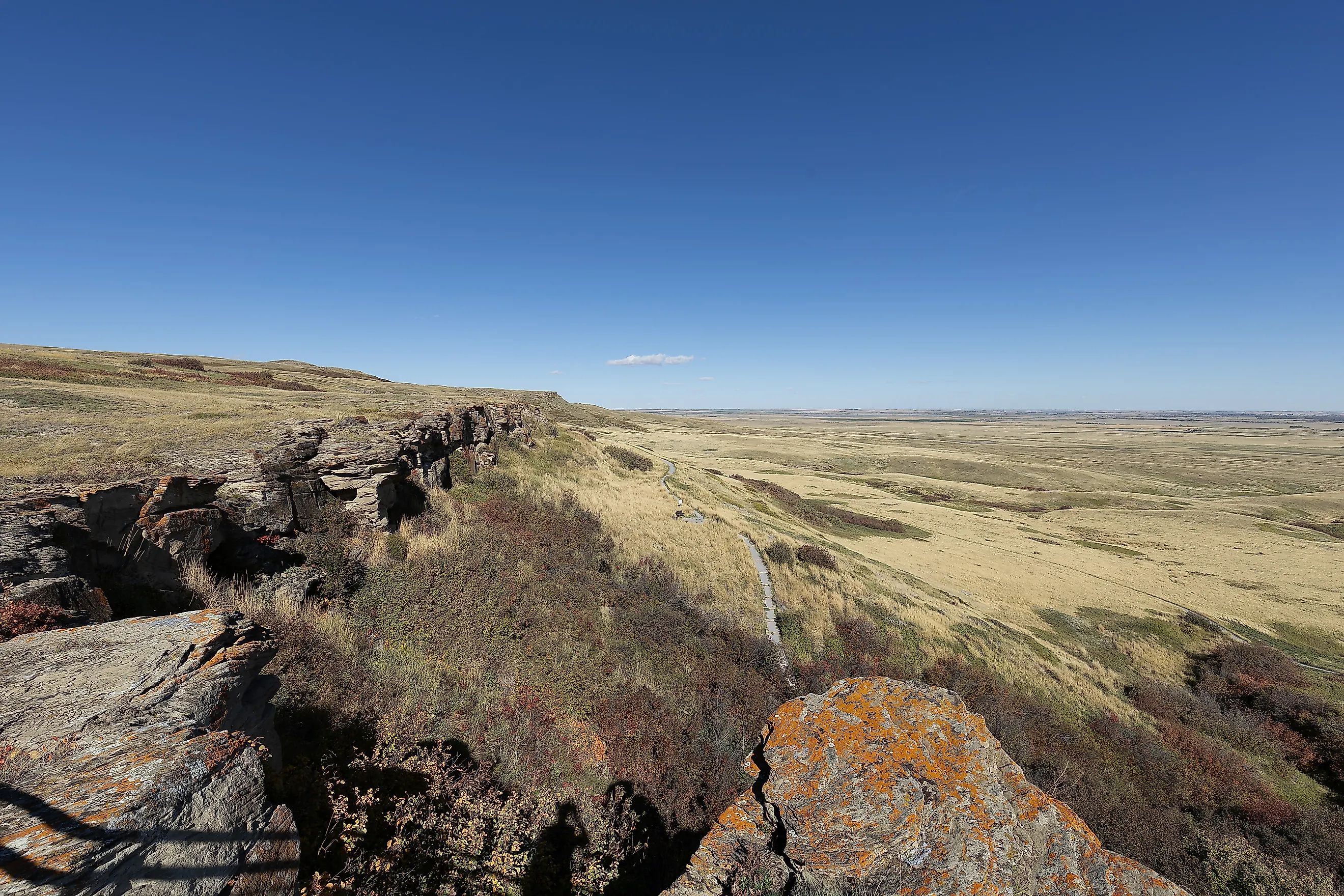
Experience This Unbelievable 6000 Year Old World Heritage Site Just South Of Calgary
When I moved to Calgary a few years ago from southern Ontario, I did so in large part to be closer to the iconic Rocky Mountains, and in broader terms, to experience a part of the country that I had little familiarity with. I pictured endless hikes on top of lofty peaks and beautiful countryside car rides in the impossibly flat prairies of the West- a landscape photographer's paradise.
As you settle into a place, you will often become more in tune with its culture, both past and present. Alberta seemingly had even more to offer than just its wonderful natural aesthetics. The more I explored, the more I uncovered what makes this place truly unique in Canada: the cowboy culture (or for a Toronto boy like me, the ability to wear a Stetson hat without ridicule), delicious yet affordable beef, a surprisingly robust dowtown core in Calgary, the city's history as an RCMP outpost, among many other fun and interesting things. I also learned a lot about the human presence in this vast province dating well before the skyscrapers and the cattle ranchers.
In my journey to see and do everything there is to see and do in my new home, I discovered something truly unexpected, that there is a UNESCO World Heritage Site within a 2-hour car ride from my driveway. But aren't UNESCO sites reserved for like, ancient stuff? Roman forts and the Great Wall of China and such? Well, yes. But, the same is true for what I am talking about here.
Head-Smashed-In Buffalo Jump is the name of the place, and I'd like to tell you more about this fascinating destination that has been visited by people for well over 5,700 years.
What is the Head-Smashed-In Buffalo Jump?
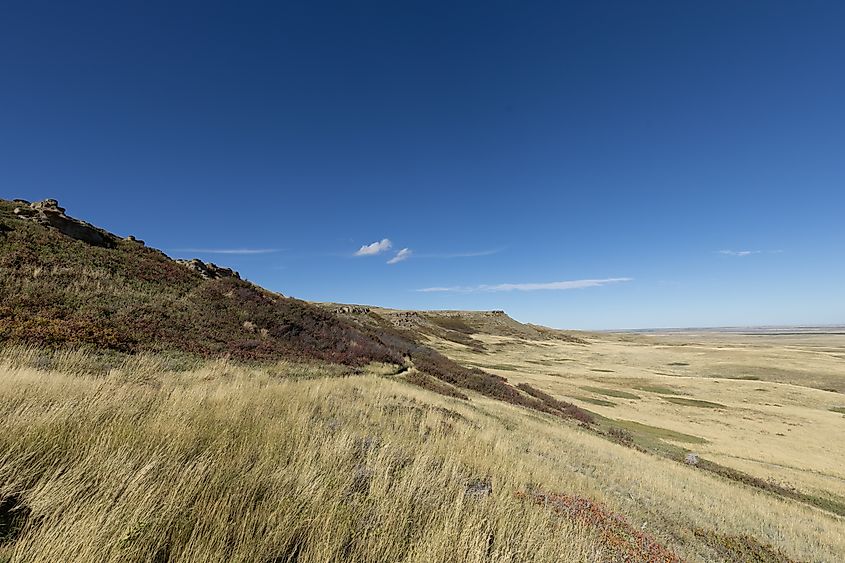
Head-Smashed-In Buffalo Jump represents one of the best-preserved examples of Indigenous hunting techniques used by Plains peoples for millennia, before the advent of firearms and horseback travel. The site was a key location where groups, most notably the Blackfoot, drove herds of buffalo off its steep cliffs that rise over the prairies, killing or disabling the wild animals for mass harvesting. The buffalo provided food, clothing, tools, and materials essential for survival in the region’s harsh environment, especially important in a time before the widespread use of agriculture.
This unique method of hunting involved careful planning, and gives us a look into the levels of meticulous collaboration ancient Indigenous peoples needed to employ in order to secure resources. Hunters would disguise themselves in animal skins (usually wolves or some other predator) and channel the buffalo into a narrow pathway, eventually leading them off the cliff. Below, other members of the party would finish off injured animals and prepare the meat for storage.
In more recent times, archaeological digs at Head-Smashed-In have uncovered thousands of buffalo bones, stone tools, and other signs of human activity, shedding light on the cultural and economic systems of the Indigenous peoples of this area of North America across several different generations.
The name "Head-Smashed-In" comes from a Blackfoot legend in which a young boy, wanting to witness the buffalo fall, stood too close to the edge and was buried under the animals, crushing his skull in the impact. Today, the site is both a historical landmark and an educational resource, giving us an important look into an ancient way of life that once dominated the western prairies of Canada.
Why Did I Travel to Head-Smashed-In?
As alluded to before, I've always been intrigued by the culture and history of places I go to, particularly the places I live in. Given its significance, and simply seeming like a cool and beautiful spot to check out, Head-Smashed-In was a no-brainer for me to visit. Luckily for me and anyone else who decides to go, this UNESCO site comes equipped with one of the most unique visitor centers/museums that I have ever encountered, along with a trail system and other amenities that flesh out your experience while there.
The Museum/Visitor Center
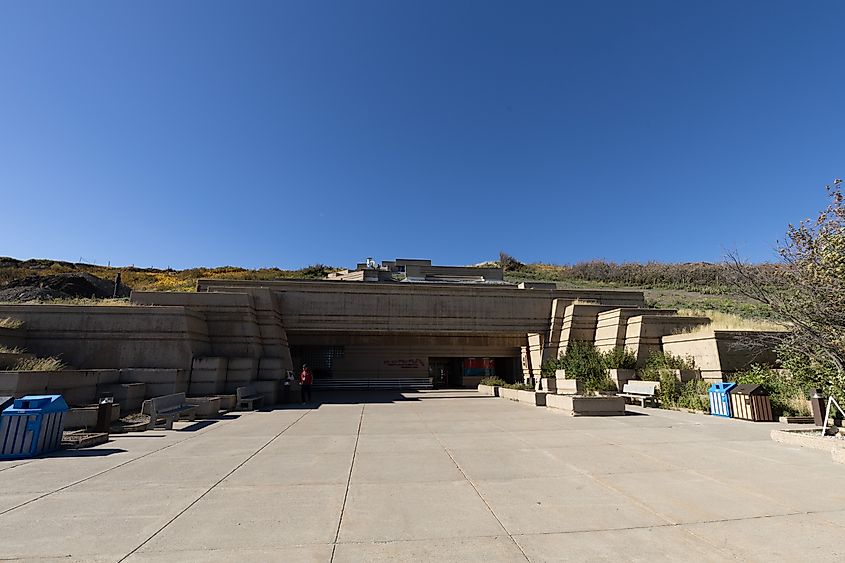
The visitor center, also called the "interpretive center," features a well-curated museum that enlightened me with about as much as I could know in regards to this UNESCO site. Almost as impressive as the contents of the museum is the building itself, which was carefully designed and crafted to blend in seamlessly with the surrounding sandstone cliffs on each side of it. It really is impressive how little of it you notice as you approach on the road leading up to the parking lot, and how big it truly is on the inside once you're there.
Featuring 5 levels, each one with different exhibits about Head-smashed-In, the tribes who visited it, and the geography of the area around it, it is easy to spend an hour or two browsing around. I think the allure of museums is the mystery of what might be inside, so I won't go into too much detail on the contents of the interior, but, I will say that you are meant to take the elevator (or the stairs, for the health conscious) to the top level, and gradually make your way down until you're on the ground floor again.
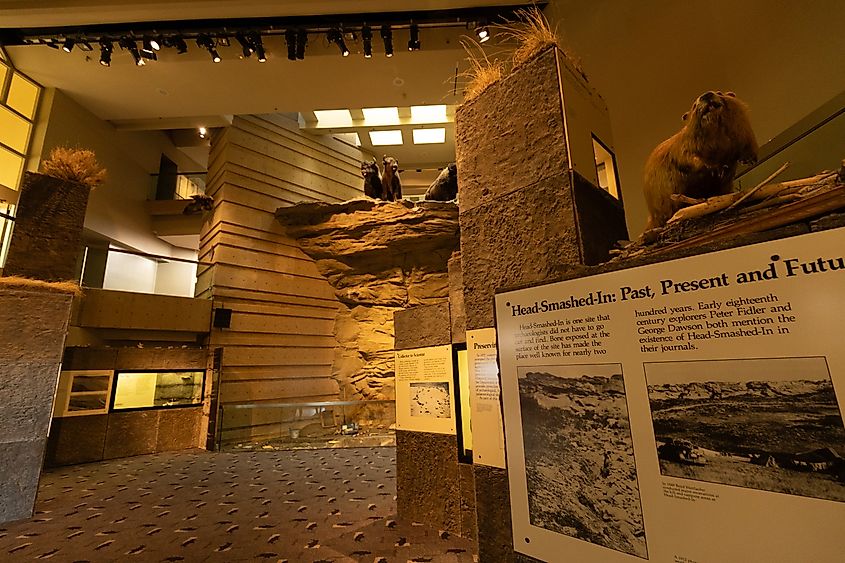
The ground floor also has a nice little gift shop (in which I picked up some books on native history and a fridge magnet), a bathroom, and a seating area for all your creature comforts.
Trails
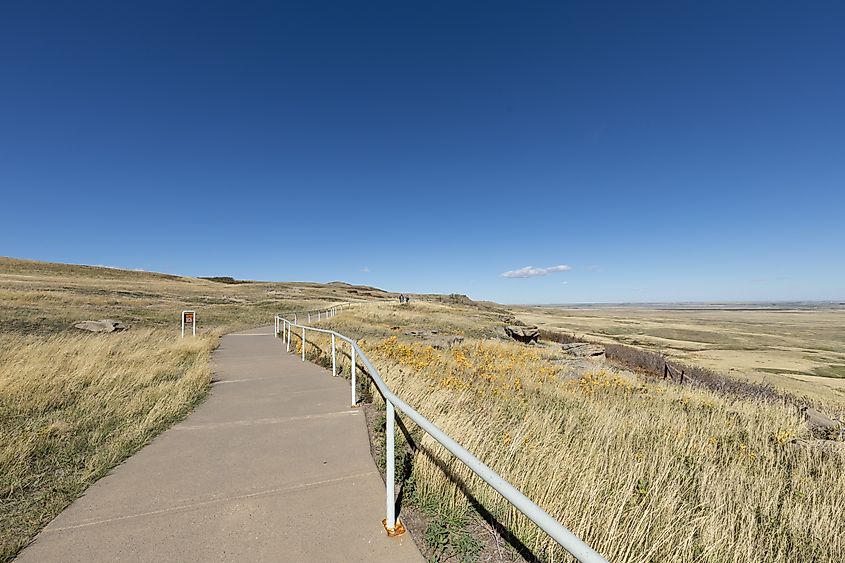
The best way to appreciate Head-Smashed-In Buffalo Jump is, of course, from the outside. While the trailhead for the pathway in the meadows at the base of the cliffs is just outside the front door of the interpretive center and obvious to all visitors, you must go inside the building to realize that there is a trail at the top too. After you take the elevator to the top floor, another set of elevators from there will be able to take you one floor higher, leading to a doorway opening up to the top of the Buffalo Jump.
While the upper path is quite short (200 meters in length) the views are undeniably beautiful, giving you an expansive view of ocean-like prairie to the south and east and the towering Rocky Mountains overlooking them to the west. There is a viewing deck at the end of it that is an excellent spot to set up your camera. Just look out for the wind, as it seems to be blowing at a near-constant rate. My camera's tripod nearly blew over several times, and I certainly could've used a jacket in the fall-like weather. I have no sources on this, but a staff member at the interpretive center mentioned that well over 90% of days out of the year in the region are significantly windy.
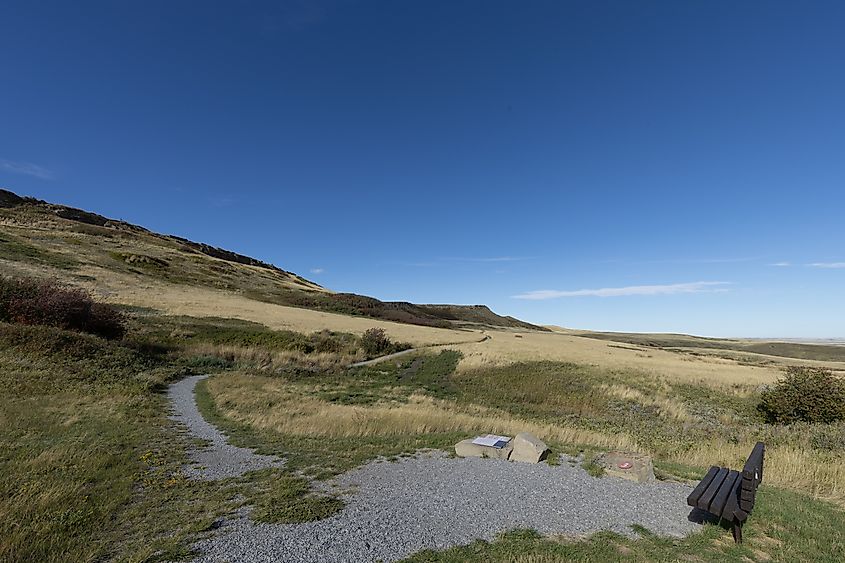
The lower trail is a loop that skirts the base of the cliffs in and around the area where countless buffalo in times past had perished. Just over 1.2 km, it is easy, and it's highly recommended by me to do both trails during your visit. Although I didn't partake in one, there also appeared to be guides who offered regular tours for guests along the trails as well.
Fort Macleod

I like Fort Macleod. It exemplifies the quintessential small town Alberta- the wheat fields that surround it, the main street that is lined with flat brick buildings, friendly residents, the local mom-and-pop shops, and the fact that it never seems to be too busy. Better yet, it is the closest town to Head-Smashed-In Buffalo Jump, and about the only place nearby to grab a coffee, a bite to eat afterward, and gas if you need it.
Whenever there, I make a pitstop at Stronghold Brewing Co. for a tasty cold beverage. I've learned on my recent trip that the brewery is housed in a heavily ghost-infested building that dates back to Fort Macleod's earliest days. I love that stuff (I'm talking about both the lager and the spooky stuff), but there are other worthwhile stops in the area too, including the North West Mounted Police fort-turned-museum which shares its name with the town and the ornate Empress Movie Theater (which is also apparently haunted).
How to Get to Head-Smashed-In Buffalo Jump
As mentioned, Head-Smashed-In is about a 2-hour drive from Calgary, directly south on Alberta Highway 2. Besides one turn onto Highway 785, the trip is really that simple for Calgarians or anyone else coming from up north.
For American readers, Head-Smashed-In is only 1.5 hours from the border in Montana. The Peigan Port of Entry and the Chief Mountain Summer Station are the two nearest border crossings, although beware of the fact that the latter is only open between May 15th and September 30th.
My trip out to Head-Smashed-In Buffalo Jump was enlightening, and on top of the fascinating story this destination tells, it is just beautiful to be in and look at. While peering over the prairies from atop its cliffs, one can truly get a sense of how vast this country is- how just one vantage point in an endless grassland can give you an unrestricted look at several different landscapes, from the Rocky Mountains in the distance to the plains that were once roamed by bands of crafty Indigenous hunters.











